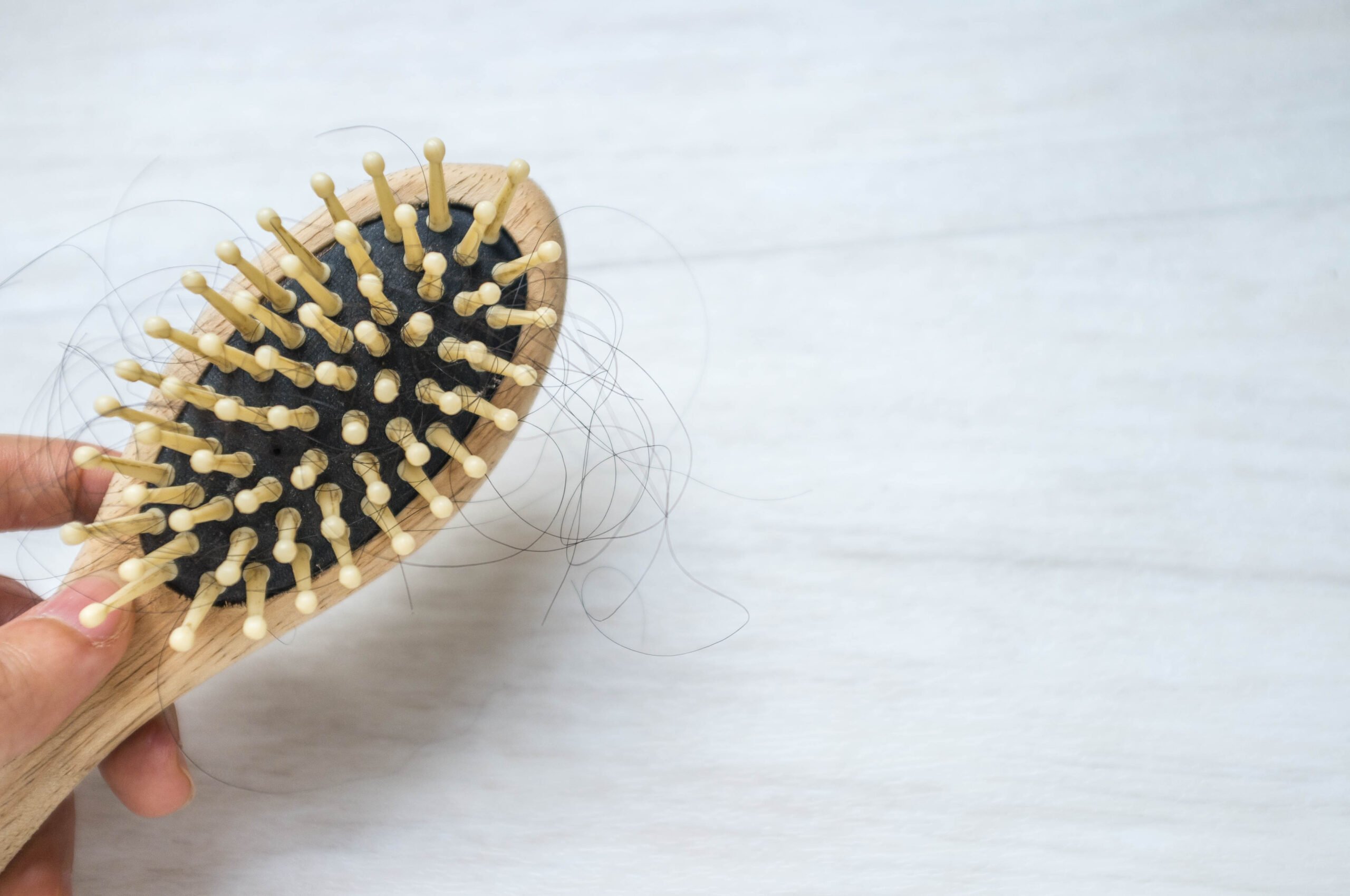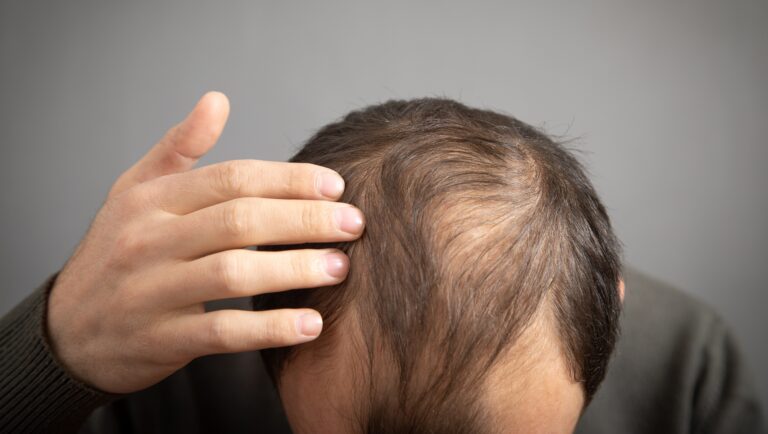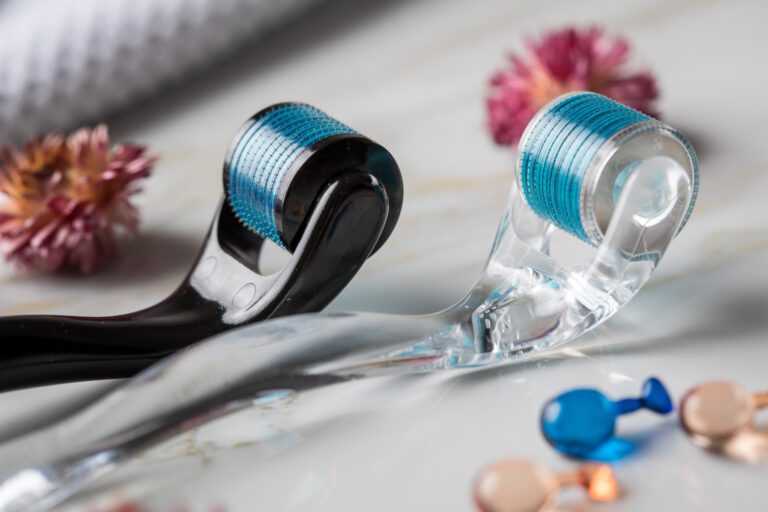Finasteride Shedding: Why It Happens & How Long It Lasts
So you’ve started taking finasteride to combat hair loss, only to face a cruel irony: finasteride shedding.
Don’t fret; shedding doesn’t mean the treatment isn’t working. It’s a common and temporary side effect of finasteride as your body adjusts to the drug.
In this article, we’ll discuss why finasteride shedding happens and how long it lasts.
Why Does Finasteride Shedding Happen?
Hair goes through a cycle of growth, transition, and resting. During the growth (anagen) phase, your hair follicles push out new hair, which will continue growing for several years. Right now, about 90% of your hair is in the anagen phase.
Hair stops growing as it reaches the end of its lifespan. The transition (catagen) phase that follows lasts for several days to a few weeks. The hair bulb separates from the dermal papilla during this stage, shutting off the blood supply.
Finally, the old hair falls out, and the new hair takes its place. This marks the end of the resting (telogen) phase and the start of the anagen phase.
When you start taking finasteride, the natural hair growth cycle gets disrupted. Hair in the telogen phase enters the anagen phase prematurely, causing increased shedding. At this point, dormant follicles make room for new, and possibly thicker and stronger, hair.
How Long Does Finasteride Shedding Last?
Not everyone experiences finasteride shedding. Sometimes, shedding is so minimal it’s indistinguishable from regular hair fall. Other times, it’s so noticeable as to induce worry or panic.
Typically, finasteride shedding happens around 2–3 months and lasts no longer than two weeks. It’s natural to feel concerned about how much hair is falling out at this stage, but try not to worry too much.
The shedding is actually a good thing, as it suggests the finasteride is working. It should sort itself out, so keep taking your prescribed dose and give your hair extra care.
Here’s another thing: While taking finasteride, you’ll still lose hair as part of the normal hair cycle, like everyone else. However, you might find that shedding has decreased significantly, starting at about 6–9 months.
Can Finasteride Cause Hair Loss?
Finasteride is a popular treatment option for men struggling with male pattern baldness or androgenic alopecia. It works by inhibiting the production of DHT, which is the hormone responsible for hair loss.
However, finasteride isn’t a miracle cure that can vanish hair loss forever. Instead, it works by stopping it or preventing its progression. While you may experience shedding early in your treatment, it’s unlikely to cause long-term hair loss.
Male pattern baldness affects the top of your head (crown) down to the hairline. Excessive or prolonged shedding in other areas could mean something else is going on. In that case, perform a self-evaluation by answering these questions:
- Are you eating unhealthily?
- Are you under too much stress?
- Are you taking other prescription medication?
- Have you been recently diagnosed with an illness?
- Do you have any symptoms aside from hair shedding?
If you’re guilty of statements 1 and 2, make some changes to your lifestyle and see if that helps. For the rest, it’s best to consult a qualified healthcare specialist for expert advice.
That said, quitting finasteride can lead to a resurgence of DHT production. Once your body has flushed out all remnants of finasteride, you can expect your hair loss to return immediately.
What Does Finasteride Shedding Look Like?
Finasteride shedding can vary from one man to another. Typically, you might see more hair strands on your pillow, comb, or shower drain. There might also be noticeable thinning around your crown or hairline, where male pattern baldness occurs.
Finasteride Shedding After 3 Months
After three months of taking finasteride, your hair might fall out more easily than usual. However, the shedding should only last for two weeks.
Finasteride Shedding After 6 Months
The shedding is no longer a side effect of finasteride but just a normal part of the hair growth cycle.
You should find that your hair loss has visibly slowed down. Not only that, but your hair should also look fuller and healthier by this time.
How to Prevent Finasteride Shedding
There’s no way to prevent finasteride shedding, but it shouldn’t be a cause for concern. These strands that are being shed are telogen hair, and they’re only clearing the way for new hair.
Instead, let finasteride do its job and focus on what you can do to encourage healthy hair growth. Consider these tips to complement your hair loss treatment plan:
- Use topical minoxidil together with finasteride.
- Minimize your stress levels through exercise, meditation, and other relaxation techniques.
- Eat foods rich in vitamins, minerals, and other hair-friendly nutrients.
- Use shampoo containing active ingredients, such as caffeine, ketoconazole, or saw palmetto.
- Avoid heat styling and any harsh chemicals.
Is Propecia Shedding Normal?
Propecia is one of the two FDA-approved brands of finasteride. Any initial shedding that may occur while taking Propecia is normal.
Propecia Shedding Cycles
Shedding can occur at different stages of your Propecia treatment, with varying degrees of severity. Here’s a timeline of Propecia shedding cycles:
- Week 2: Propecia shedding is rare.
- Month 2: Some shedding is common.
- Month 3: Shedding is most likely to occur at this point. You might experience noticeable hair fall, so treat your hair gently.
- Month 8: Extra shedding should cease, and you may notice new growth.
- Month 18: There’s a significant decrease in hair loss and a visible improvement in hair thickness and density.
Final Thoughts on Finasteride Shedding
It’s not uncommon to experience finasteride shedding during the early stages of your treatment. Shedding is a well-documented side effect of finasteride, including the brand Propecia. Fortunately, it doesn’t last long and should be over in two weeks.
If you’re having an unusual amount of shedding, consult a hair loss specialist who can assess your situation. Stress and certain medical conditions can also cause excessive hair fall, so it’s crucial to manage them as well.
Finasteride shedding or not, you should give your hair extra TLC. Adopt a hair care routine that supports healthy growth, and don’t forget to take your daily dose of finasteride!







